ATI's X8xx CrossFire Graphics Arrive
by Derek Wilson on September 26, 2005 1:00 PM EST- Posted in
- GPUs
Super AA and CrossFire
By rendering the same frame on both cards with different subpixel sample patterns, the images can be blended together to provide a smoother image at any given resolution than a single card is capable of rendering. At the same time, as resolution increases and pixel size decreases, antialiasing becomes less important. This is yet more support for believing that greater than 1600x1200 resolutions should be supported on a high end setup like this.For those who will be running CrossFire solutions at 1280x1024 or even 1600x1200, Super AA will be a welcome addition to image quality. ATI already leads the industry in AA quality because they use a programmable sample pattern when antialiasing a pixel while NVIDIA uses a fixed ordered grid approach. The difference really starts to add up when SLI AA and Super AA are compared.
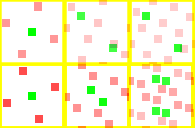
From left to right, 4xAA, 8xSLI AA/10xSuper AA, 16xSLI AA/14xSuperAA. ATI is the top row.
The more even spread that ATI is able to maintain over a single pixel gives the CrossFire solution a better result. Even though NVIDIA's 16x SLI AA has 16 geometry sample points and 4 texture sample points compared to ATI's 12 geometry points and 2 texture points, the distribution of ATI's sample points provide more efficient coverage. Incidentally, if ATI had named their modes like NVIDIA's AA modes, they would have said 20xAA rather than 16xAA.
NVIDIA's 4 texture sample points (essentially super-sampling/SSAA sample points) could provide better interior, texture, and transparent surface antialiasing. Unfortunately, their arrangement limits their usefulness in this regard. Thus we have to declare ATI the clear winner in the AA department. Of course, Super AA mode does take quite a performance hit as we will find out later. But take a look at what it can do to Half-Life 2 at 800x600 (no AA, 4xAA, 6xAA, 10xAA, 14xAA from top to bottom):
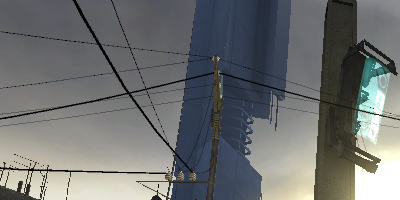
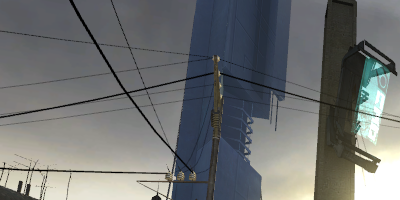
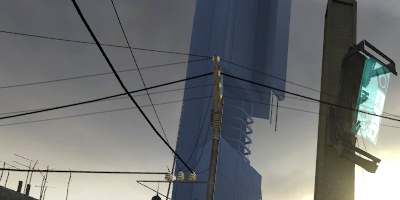
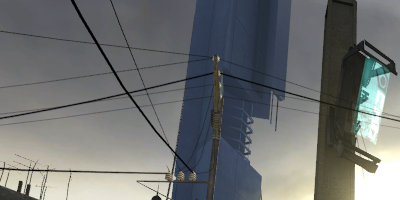
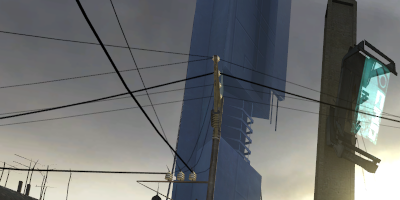
While differences beyond 4xAA are harder to spot, take a look at the antennae on the bottom-left of the images. You can see how the barely-visible parts are rendered better, particularly with the 10xAA and 14xAA modes. If you have the GPU performance to handle such features, they're a nice addition.
The down side of Super AA (aside from the performance hit) is that it will only run in full screen applications. Windowed applications are still stuck with 2x 4x 6x and no AA. Even if a Super AA mode is selected, only half the subpixel samples are used. We are not sure if this is a hardware or software limitation, but those of us who play MMORPGs in the background will need to be aware of this issue.










76 Comments
View All Comments
waldo - Tuesday, September 27, 2005 - link
wow, that commment sure brought a lot of attention.I would agree that Thom's appears to be "outright-bought" in this article as they don't post the limitation of hte card at 1600x1200 @ 60hz, or at least not as clear as Anand, but they do make some valid comments that Anand's article didn't post either.
Perhaps they are targeting different audiences? No idea, but why are their numbers on par with the 7800 SLI in many situations? That sounds fishy somewhere.
DerekWilson - Tuesday, September 27, 2005 - link
Just to cover what others haven't yet --Adding an X8xx card to an R520 CrossFire card would either not perform well at all or would not work.
Personally, dual-GPU as an upgrade solution is not really a plus unless you are just deffereing purchase for a couple months while prices drop and your wallet heals from the first GPU purchase. If your personal upgrade cycle is a year or more, you'd be much better off just buying a new card from a new architecture.
Everyone else has pretty well hit it on the head. The 1600x1200 limit is a killer. We also have no availability and we are butted right up against the launch of ATIs next gen parts.
I wouldn't recommend SLI either -- as I said -- unless you want absolute maximum preformance. My recommendation may change to CrossFire after the R520 comes along. But who knows what the results of that comparison will be :-)
Mixed modes would perform slightly lower than the dual x850 xt setup and still at most 1600x1200@60 ... Yes, the X850 XT CrossFire does well in performance, but if I'm not going to recommend the X850 XT CrossFire, I'm certainly not going to recommend a mixed solution that will perform worse.
waldo - Tuesday, September 27, 2005 - link
I wasn't saying that you would recommend the other, but it would have been interesting for the readers (who attempt to be congiscent, autonomous beings, and only act at the whim and will of god Anand!) to be able to compare for themselves, per chance see what a mixed solution looks like as that is a selling point of ATI over Nvidia.I don't think SLI from NVIDIA is much of a solution. If you have $1k to shell out for graphics out of the starting gate, great. But you have to get the same manufacturer, the same card, and then the motherboard to match. But I won't be buying an ATI Crossfire setup just yet either.
JarredWalton - Monday, September 26, 2005 - link
Here's my personal take:1) If the 1600x1200@60 Hz problem doesn't bother you, that continue. For me, it's a deal-breaker.
2) Do you already own an X8xx card of some form?
3) Do you have a motherboard with two PCIe X16 slots?
4) Using the ATI Crossfire chipset?
If all of those are true, X800 Crossfire is worth consideration. Personally, 1, 3, and 4 eliminate it from contention. That said, this is current X8xx Crossfire we're looking at. We're not reviewing R520 Crossfire yet, and it will address at least the first point in some fashion.
Brian23 - Monday, September 26, 2005 - link
pwnedfishbits - Monday, September 26, 2005 - link
Yeah, accusing a site of corruption could seem like an attack.
1600 res limited to 60 hz is a deal-breaker for me right away. I can't tolerate playing at 60 hz for any length of time. I'm not a snob about this, it makes me physically feel ill. Pairing two powerful and pricey cards in one system should offer better, easily. I would not plunk down that kind of money to not be able to play at 16x12 when others do it at liveable refresh rates. Nvidia has better price-to-performance single and dual card solutions available right now. ATI should have the same shortly. The mega AA sounds great, but if as soon as you turn it on you say "I need to upgrade now," then what's the point? While the reviewed Crossfire is certainly nice in performance, there's better to be had for the money from both GPU suppliers. It would be irresponsible to recommend it at this time at the current price.
Now if there's a confluence of specifics where this setup makes gaming and financial sense to a handful of people out there, more power to them, they should enjoy this. For the teaming masses of readers though, you shouldn't be suprised by the lack of recommendation.
TrogdorJW - Monday, September 26, 2005 - link
LOL... attack an enthusiast site? Say it isn't so!How about the THG article? They review the platform as a whole, so that's a bit different. I won't comment much on their review, but consider a few points.
They have a page entitled, "Advantages Of CrossFire Over SLI" that reads like marketing hype, and yet they make no mention of the resolution limitation or "Advantages of SLI Over Crossfire". Clearly, they know the limitation exists - ATI hasn't tried to hide this fact, and the lack of any benches at higher than 1600x1200 is telling in and of itself. You do the rest of the math. (Also, some of the results are at best suspect.)
IMO, the writing of the THG article was a bit higher quality, but the content was far more suspect. They come off making everything sound rosey for ATI, and only a fool or a marketing department would believe that. ATI isn't dead yet by any means, but Crossfire is doing little for me right now. Did you realize that it's still not available for purchase at retail? Hmmmm.....
Oh yeah, Catalyst Control Center is pure garbage. Slow, clunky UI, memory hog, and causes as many problems as it fixes. Anyone that tries to tell me how great CCC is (i.e. THG) is immediately under suspicion.
fishbits - Monday, September 26, 2005 - link
Oh, I wasn't making a blanket statement that a review site couldn't be accused of corruption. Just that if you're going to do it, don't then wuss out and pretend it's not an attack :)My experience with THG is mostly second-hand, so I don't say much about it. That they chose to not mention the 16x12 refresh rate limitation, especially with all the debate over it before today, well... that's scandalous.
erinlegault - Monday, September 26, 2005 - link
The TechReport review was the best. Anand seems to give poor Graphics reviews, and definately not up to par with their CPU, motherboard and memory reviews. It must be the authors differences of opinion.overclockingoodness - Monday, September 26, 2005 - link
Could you clarify why Anand's video reviews suck? Just because Anand doesn't benchmark and show 100 diff. graphs of the cards based on the same architecture doesn't mean AnandTech's video reviews suck. TR is quite redundant from one article to another, if you didn't notice.